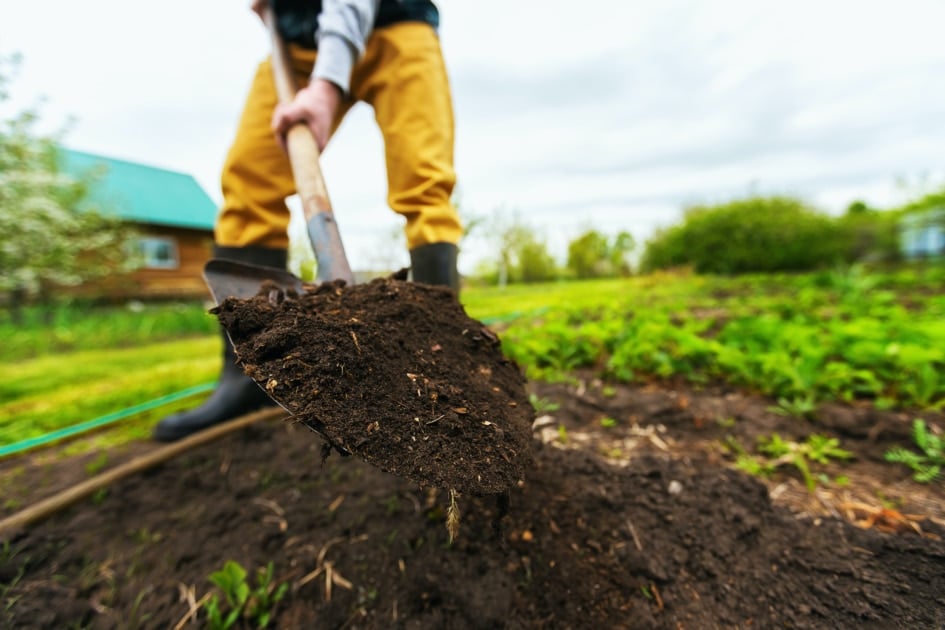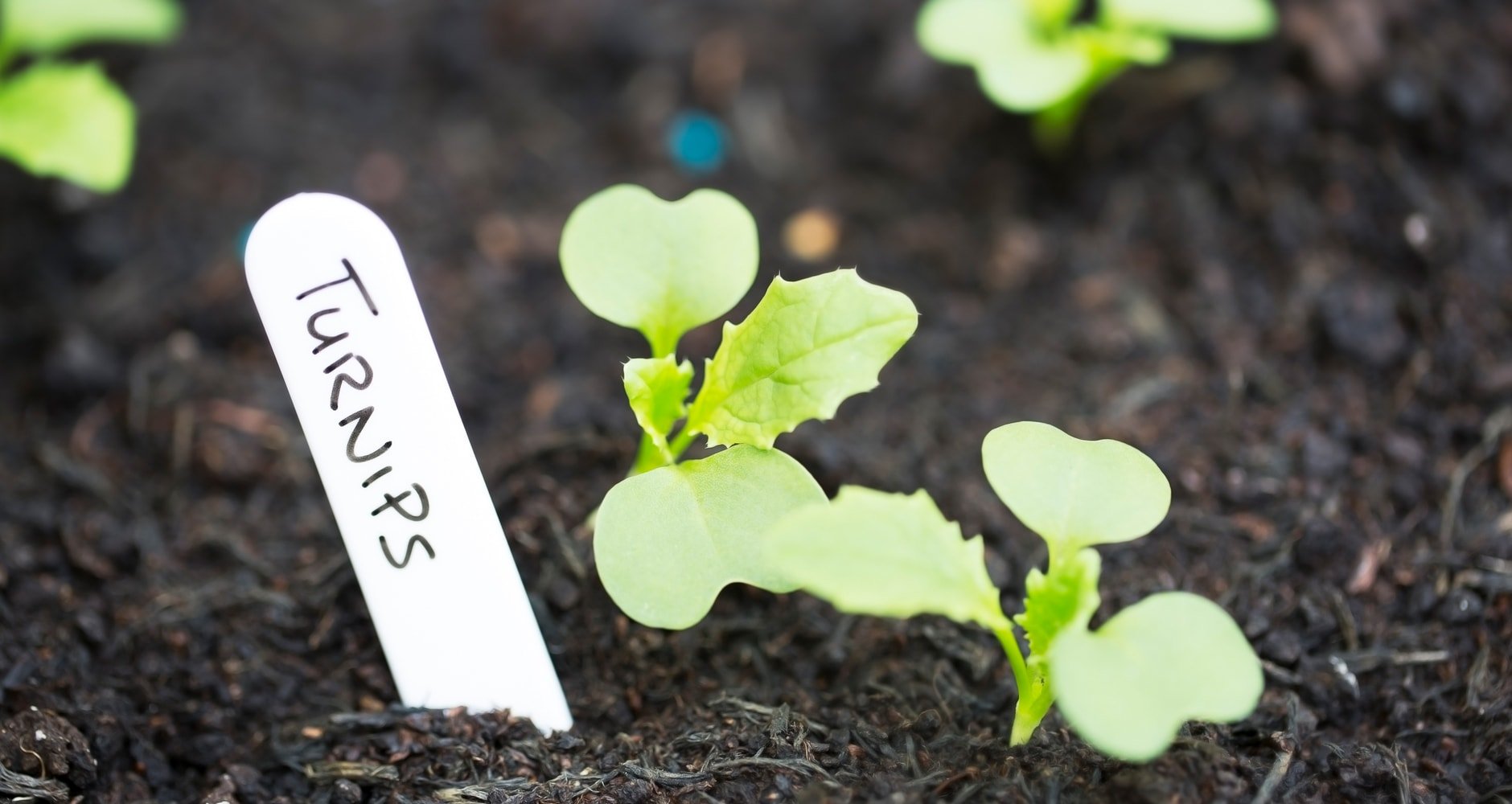Why Do We Garden By The Moon?
Gardening according to the phases of the Moon is a practice that has been around for as long as humans have been growing their own food. But what is it, exactly? Find out!

Gardening by the Moon, or more specifically, according to the phases of the Moon, is an idea that has been around for as long as humans have been growing their own food. It’s becoming more and more in vogue, cropping up (no pun intended) in books, blogs, and other educational materials coming out of the permaculture movement, “a philosophy of working with, rather than against nature.”
The Gardening By The Moon Philosophy

Here at the Farmers’ Almanac, though, gardening by the Moon has always been our philosophy, and our editions include a calendar of the best days for sowing, planting, weeding, and other garden chores, as determined by the phase and position of the Moon. Our readers have long sworn by this method of managing their gardens and crops.
But how could a chunk of rock more than 200,000 miles away affect how plants on Earth grow?
Those who swear by this ancient growing method say the water in both the ground and in plants are affected by the gravitational pull of the Sun and Moon, just like ocean tides are. Just as the tides are highest during the new and full phases of the Moon, this theory holds, seeds, too, will absorb the most water during these times.
How Moon Phases Affect Plant Growth
Though the practice is as old as agriculture itself, planting by the Moon is a complex art. Here’s a look at how Moon phases are believed to affect plant growth:
Over the course of a 29½ –day lunar cycle, the Moon goes through four basic phases, new, full, and two quarter phases—first and last. For half of its cycle, between the new and full phases, the Moon is waxing (growing in illumination). Then, after the full Moon, it begins to wane (decreasing in illumination).
Check out our Moon Phase calendar.
Aboveground Crops
All aboveground crops should be planted when the Moon is waxing. During the new Moon is the best time to sow or transplant leafy annuals such as lettuce, spinach, cabbage, and celery, while the first quarter phase is good for fruits and foods with external seeds.
Below-Ground (Root) Crops
Root crops do best when the Moon is waning. When the Moon is just past full, it’s a good time to plant root crops like potatoes, beets, and turnips, and fruit trees. During the last quarter phase, it’s best to avoid planting at all. Work instead on improving soil, weeding, mulching, composting, etc.
But knowing the phase of the Moon isn’t enough. Planting by the Moon also requires knowledge of the Moon’s place in the zodiac, based on ancient lore that each sign confers certain growing conditions.
For instance, water and earth signs—Cancer, Scorpio, Pisces, Taurus, and Capricorn—are said to bring moist, fertile conditions, whereas most air and fire signs—Gemini, Aquarius, Aries, Leo, and Sagittarius—are said to be barren. There are some exceptions to that rule, though. The earth sign Virgo is barren, and the air sign Libra is said to be a relatively fertile sign.
Some signs are also believed to benefit specific types of plants. For example, Taurus is said to favor leafy greens, while corn does best under the influence of Libra.
Consult Our Daily Planners Online
Can’t keep track of all these variables? Not to worry. The Farmers’ Almanac has got you covered! Just consult these handy guides before you take your trowel to the soil.
Visit our online planners:

Jaime McLeod
Jaime McLeod is a longtime journalist who has written for a wide variety of newspapers, magazines, and websites, including MTV.com. She enjoys the outdoors, growing and eating organic food, and is interested in all aspects of natural wellness.







Does the day begin at sunrise and end at sunset, or can you plant before the sun rises or after it sets, on a good planting day?
Am trying to learn about this way of farming is there some information you you have even put pictures of the moon showing the stages ?
Just got back home from visiting Newark, Ohio. There is an area that is over four square miles devoted to ancient earthen mounds that line-up with the 18.6 year moon cycle to this day. They moved seven million sq. ft. of dirt, clay and gravel in baskets that held one sq. ft. per load. That sq. ft. would way 80 pounds if it was just dirt. If it had stones or pebbles it could weigh much more. Images of this site do not do it justice and it is to be turned into a park on 1/1/25. A golf course has leased the site since 1910 and kept the mounds in good shape it would seem.
Does the Lunar Major and/or Minor Standstill plus the various rising and setting of the moon have importance since it changes so often in the 9.3 year period? From a farming standpoint why would you spend so much time making gigantic earthworks devoted to Grandmother Moon alignments?
Question, I like to garden by the moon however sometimes I just have too much to do. The question I have is this, is it when the seed goes in the dirt regardless if it’s outside or inside or is it when the plant is transplanted? I like to start seeds in pots so I know what seeds germinate them plant them outside to grow. Let me know your thoughts.
My mom recently passed leaving me with no living relatives and no family and I’ve never been married no children etc she always consulted your almanac before working in the garden and this will be the first year that I will do so alone your advice has been invaluable I remember our gardens were treasures they are one of my best memories and I’m sure that this year will be no exception thank you again for many years of bountiful harvests. Hi
We are sorry for your loss, but grateful that the Farmers’ Almanac can play a role in keeping her spirit with you, and continuing to guide you. Best Wishes!
Hey there last year something destroyed my lawn grubs maybe but I want to work to rebuild my lawn but I’m not sure what category grass seeding falls under to follow??
Wouldn’t that fall into the category of leafy green plants? Just spit balling here….
Does gardening by the moon also apply to raised garden beds?
Yes, it would be the same. Good gardening to you!
Too bad the ‘best planting/transplanting’ days also seem most likely to be the best days for 3 days of steady rain…
How do time zones play into your gardening calendar. What time zone is your calendar based on?
Does the planting by the moon also influence flower bulbs in pots
Hi B. spitzfaden, yes! All living things are assumed to be influenced by the Moon’s gravitational pull.